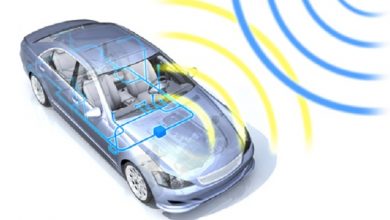Sagar Apte, founder of CarIQ, one of the early startups in insurance telematics shares his views

Can you briefly share the evolution of this telematics in insurance in India? (Since the earlier notification in August 2017 and then in November 2020, what has been the major developments in this space?)
Insurance Carriers in India have been experimenting with UBI for a while now. UBI has become a strong Product line in advanced countries and everyone knew it was just a matter of time before we all catch up. So in a way, everyone has been looking out into the horizon to be ready for this development. The first strong tailwinds were from the IRDA’s announcement of Sandbox. This was when insurance carriers and technology companies such as CarIQ started to really get excited about the prospects of launching UBI Products in India. Unfortunately, COVID hit us and that did slow down the pace of conversations since there were many more critical issues to address. However, it did bring out a critical aspect around usage. Do vehicles pay the same premium despite being parked in protected communities for such long periods?
Who are the leading players from insurance taking interest in telematics for insurance?
Everyone. None of the insurance carriers can afford to overlook this trend. Insurance carriers in USA paid the price of overlooking Progressive’s UBI inroads. Progressive is an insurance carrier out of the USA which brought UBI products and established itself firmly in the market as against other players. Eventually others had to create their own programs but Progressive had dug their heels deep by then. Learning from this, every insurance company in India and outside are aware and working on UBI is some capacity or the other. Bajaj Allianz, ICICI Lombard, Tata AIG. HDFC Ergo have all been investing steadily into this play.
Could you tell about the sandbox testing of products in insurance telematics?
Sure. IRDA invited insurance companies and technology companies with proposal to do a limited release of their Products. There were riders such as limit on number of units or amount that could be underwritten. But this was huge. For insurance companies to release Products in the market in a controlled fashion is what was needed. Multiple insurance carriers launched their products and many technology companies aligned with the insurers to release these limited Products. I think the recent announcements from IRDA are a result of the hard work and positive results of those Sandbox initiatives.
Any views on filing of these products?
I would like to believe Insurance Carriers are filling these Products and Bajaj Allianz (at the time of writing this article) have released a press announcement confirming this.
What will be the mechanism for data storage at IIBI? How will the data be made available to insurance companies for processing and usage?
Ah, that’s a tricky one. IIBI will have to work with companies that have worked in this areas for years now and understand the nature of the data. ‘All Data is not equal’ is a good one for the automotive data. IIBI should work with experience partners in drafting the parameters based on real collected data. The intention is definitely good. This will allow safe usage of data, put some responsibility on data partners, and bring it in line with the proposal Indian data handling privacy laws.
What are the challenges IIBI may face in managing this data? Is there any discussion on data monetization and data privacy?
The data collected is huge and everything is not relevant. All data is not monetizable but monetizable data may not be needed for an insurance company to drive risk score. So it is going to be interesting to see where the lines are drawn. Today IIBI looks to protect end user data above anything else. This will assure data privacy. Data monetization is always in conflict with data privacy and end user consent will be key. However, again, data collected may be critical for monetization but have low value in the risk scoring space. Developed markets have kept these topics separate. Data monetization is a seen as a way to drive value to the vehicle owner, bring relevant and needed services to them, and most critically share the cost of this massive infrastructure costs.
How will telematics in insurance impact the commercial vehicle segment in India? With AIS 140 already ensuring many of the vehicle in public transport are fitted with VTS, will this speed up the telematics for insurance in this space?
In my opinion, this is a low hanging fruit. The cost of collecting, and transferring data to the cloud is already borne by the vehicle owner. Now if insurance companies can discount their premiums and help reduce actual cost of AIS-140 for commercial vehicles, that will indeed be a boon.
Do you foresee implementation challenge in Named Driver Policy?
IRDA is still considering Named Driver Policy in India. The working committee setup has positive recommendations on the same. However, the challenge of ‘identifying’ the driver has not been resolved. It is a tad easier on the commercial lines but commercial lines are heavy on third party. The real benefit is for individual owners. The real question is whether the risk profile will substantially decrease in a single user driven vehicle. Our early studies show that majority of the vehicles are single driver driven or at most by two individuals. The current risk ratings are assuming these trends. So will named driver policy ‘increase’ or ‘decrease’ premiums? And how will one justify the additional cost of identification of named drivers in case of claims. There are many open questions here and I think it will be a while before we see Named Driver Policy impacting premiums and benefit to vehicle owners.
Published in Telematics Wire





